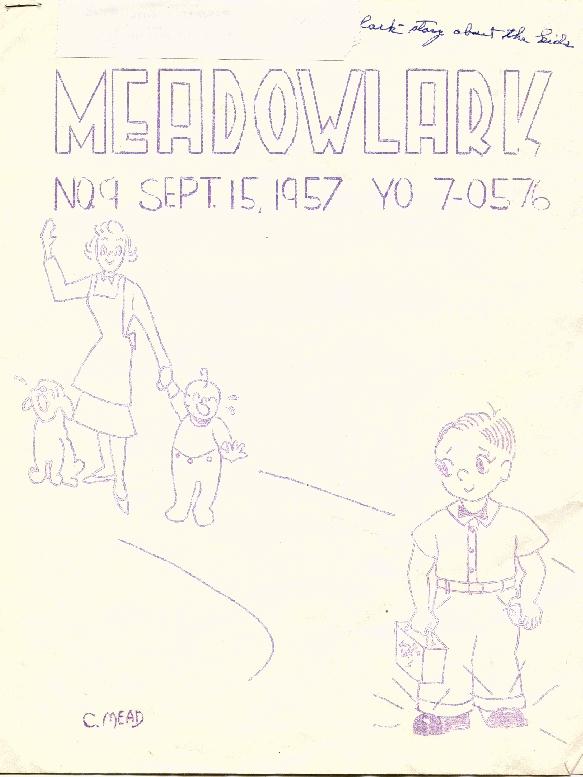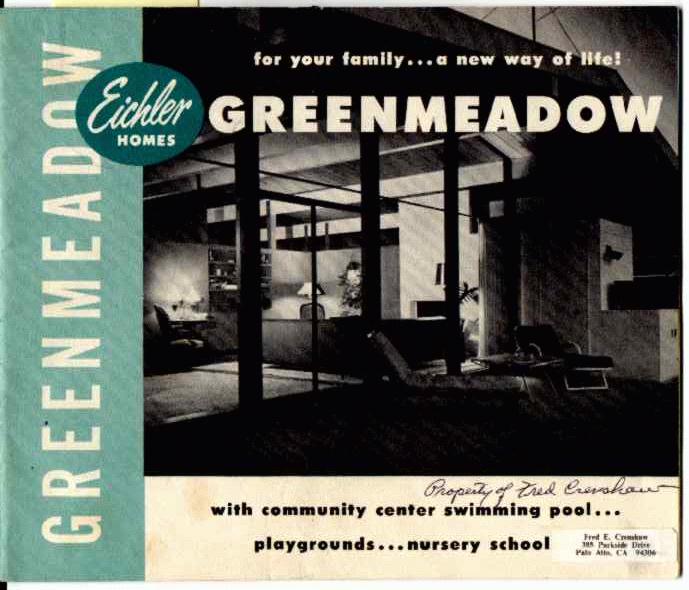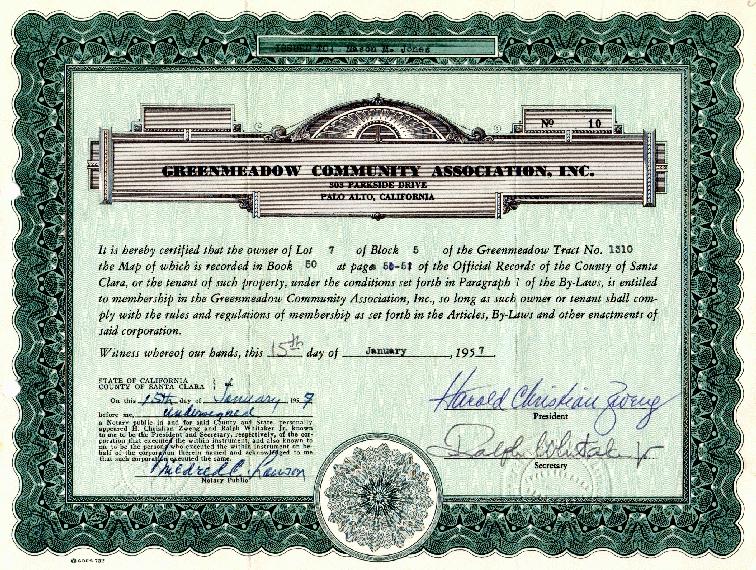GREENMEADOW HISTORY
 THE HISTORY OF GREENMEADOW
THE HISTORY OF GREENMEADOW
 The land that now comprises Greenmeadow was originally part of the tribal lands of the Ohlone Indians. With the coming of the conquistadores the area successively fell under the control of first Spain, then Mexico, then briefly, the California Republic, and finally the United States.
The land that now comprises Greenmeadow was originally part of the tribal lands of the Ohlone Indians. With the coming of the conquistadores the area successively fell under the control of first Spain, then Mexico, then briefly, the California Republic, and finally the United States.
The name, Palo Alto, is a Spanish reference to a tall twin redwood tree, still growing at the north end of the city.
During all these times the land was sparsely populated and was used mainly for ranching.
The city of Palo Alto, of which Greenmeadow is a part, got its start as a village to support Leland Stanford’s new university. It was incorporated in the spring of 1894. The original town was situated in the northern part of the present city. The Greenmeadow area continued to be agricultural until after World War II.
In the prosperity following the war, there was a significant building boom that spread Palo Alto toward the south. The pre-eminent builder in this boom was Joseph Eichler. Eichler, who was born in 1900, had only begun building homes when he was in his 40’s. (Prior to that he ran a butter and egg business owned by his wife’s family.)
Having lived in a Frank Lloyd Wright house, Eichler was working with architect Robert Anshen, of the firm of Anshen and Allen, on the design of a custom home, in the modernist style, to be built for Eichler. The two men fell into discussions of the possibility of building affordable tract housing in this same modernist style. The outcome of these discussions was a series of tracts of “Eichler homes” in south Palo Alto and elsewhere.
By the early fifties, Eichler’s home-building business was so prosperous that he needed to hire additional architects. Thus it came to be that Greenmeadow was designed by the architect A. Quincy Jones of the southern California firm of Jones and Emmons.
Joseph Eichler’s grandson, Steven, talks about how his grandfather got into the home-building business.
Alice Crenshaw describes her first impression of Eichler homes.
Fred Crenshaw pulls one over on Joe Eichler.
One of the unique features of the Greenmeadow community is that it includes a community center with a private park, nursery school, and swimming pool. This community center was designed for the use of Greenmeadow residents, and was administered by the Eichler organization.
In early 1955 a number of Greenmeadow residents became concerned that the Eichler organization was planning to rent the community swimming pool to a swim school for a portion of the day, which, the residents feared, would deprive them of the full use of the pool. To protect their rights, these residents took two actions which were to have farther reaching consequences than they imagined: first, they hired an attorney, a young lawyer just starting his practice in Palo Alto, by the name of Pete McCloskey. Second, they formed a community association as a California corporation. The Greenmeadow Community Association was incorporated on July 16, 1955.
Greenmeadow resident, George Ebey, talks about proposed lawsuit with Joseph Eichler.
Pete McCloskey, Greenmeadow’s lawyer.
On the day before Thanksgiving in 1955, Joseph Eichler met in his office with Greenmeadow representatives, including Pete McCloskey and John Berwald, who had originally suggested incorporating, and who had become a spokesman for Greenmeadow. In that meeting Eichler offered to sell the community center to the Greenmeadow residents for $20,000, which was a low price, even in those days. John countered with $10,000, and Eichler accepted.
John Berwald, first Greenmeadow president, tells how it all turns out.
Bank of America loaned Greenmeadow the $10,000 to buy the community center. It was a six-month loan based on signed pledges from Greenmeadow residents for $50 each toward the purchase. There were then 180 homes in Greenmeadow I and an additional 63 homes in Greenmeadow II for a total of 243. At least 200 pledges were needed to raise the $10,000, and according to Ralph Whitaker, whose job it was to secure the pledges, “We went over the top, but not by much.”
Meanwhile, on July 4, 1955, a neighborhood Fourth of July Parade was held, a tradition that has been repeated every year since then.
John Berwald became the first president of the Greenmeadow Community Association. He went on to become a member of City Council and later Mayor of Palo Alto.
So, what are the far-reaching consequences of the actions taken by those early Greenmeadow residents? As for Pete McCloskey, he went on to become a U.S. Congressman. In the process he defeated none other than former child star Shirley Temple, a significant accomplishment considering that even to this day, Shirley Temple probably has better name recognition than many politicians do. McCloskey has credited the Greenmeadow community for supplying much of the grass-roots support that got him elected.
The Greenmeadow Community Association continues to exist and be active to this day, and serves as a unifying force creating a real community unto itself in the midst of the suburban sprawl that has become Silicon Valley.
 SOURCES
SOURCES
Most of the material in this article was taken from a series of videotaped interviews with a number of original Greenmeadow residents, such as John Berwald and Ralph Whitikar; and also Pete McCloskey and Steven Eichler, the grandson of Joseph Eichler. I recorded these interviews in 1994.
Additional sources of information are as follows:
The 1987-88 Board of Directors of the Greenmeadow Community Association, Incorporated, Untitled memorandum to “Members and friends of GREENMEADOW.” 1987, Palo Alto, unpublished.
Ditto, Jerry, Lanning Stern, Marvin Wax, Design for Living: Eichler Homes, 1995, San Francisco, Chronicle Books.
Winslow, Ward, and the Palo Alto Historical Association, Palo Alto, a Centennial History, 1993, Palo Alto, Palo Alto Historical Association.
Information on the early history of California includes links to the Library of Congress.
Thanks to Jeff Justice for scanning the Greenmeadow historical images and thanks to Sigrid Pinskey and Carroll Rankin for supplying the material that was scanned.
Thanks also to Doug Appelt for digitizing and preparing the video clips.
Last updated February 2, 2016 by Glenn Story

A 1957 issue of the Meadowlark, the Greenmeadow monthly community newsletter.



